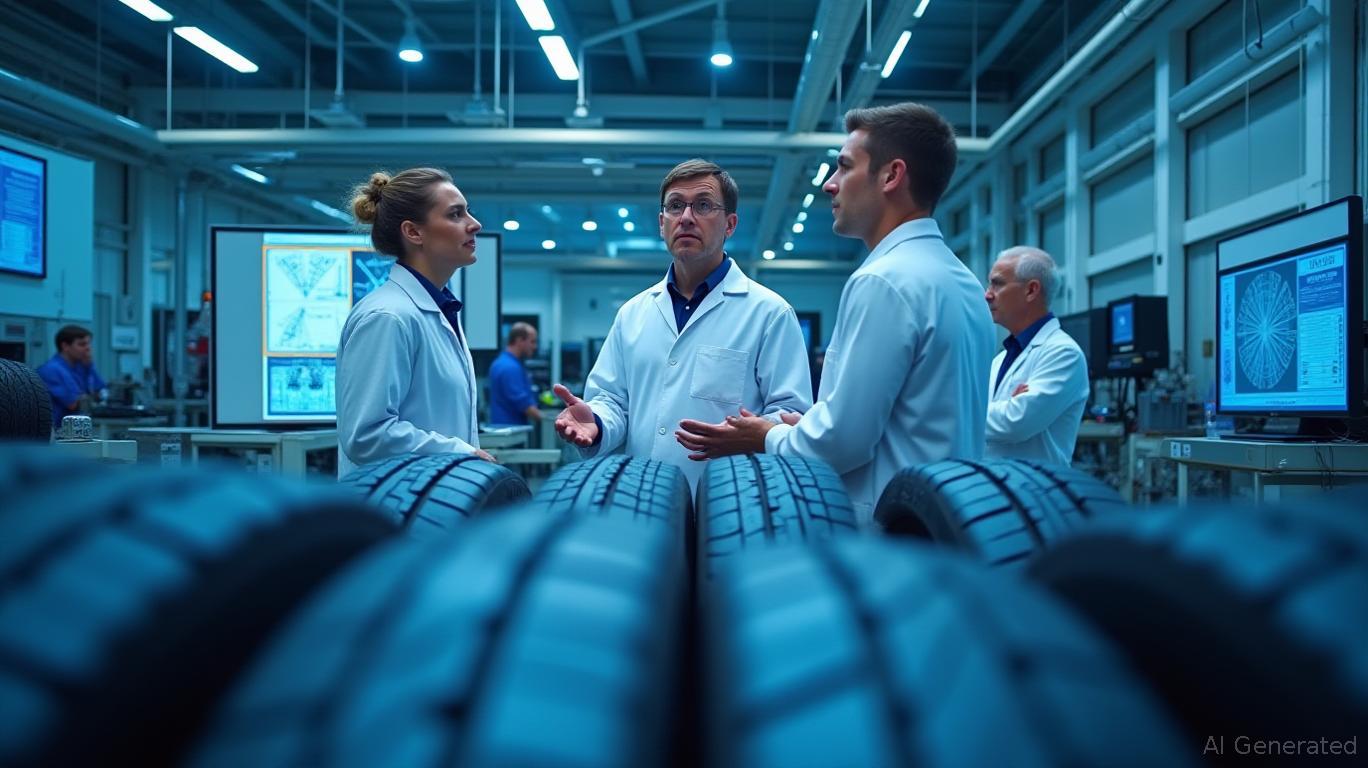Michelin's Querétaro Closure Signals a Shift in Automotive Manufacturing: Navigating Tire Industry Realignment
The closure of Michelin's Querétaro plant by year-end 2025 marks more than a regional operational adjustment—it is a bellwether for the broader sectoral realignment reshaping the global tire industry. As legacy facilities falter against evolving market demands, capital is flowing toward agile manufacturers equipped to serve SUVs, electric vehicles (EVs), and the smart technologies of tomorrow. For investors, this transition presents clear winners and losers. Let's dissect the trends and map the opportunities.
The Querétaro Closure: A Microcosm of Industry Challenges
Michelin's decision to shutter its first Mexican plant—producing 500,000 tires annually—highlights two existential threats to traditional tire manufacturing:
1. Shifting Demand: The rise of SUVs and EVs requires larger, higher-performance tires that older facilities cannot cost-effectively produce.
2. Technological Obsolescence: The Querétaro plant's aging equipment lacks the flexibility to meet modern standards for sustainability (e.g., low-rolling-resistance materials) and advanced manufacturing.
The closure will displace 480 workers, but Michelin's support plan—including severance, relocation, and training—underscores a broader strategy: abandoning outdated infrastructure to focus on high-margin, future-ready assets. This includes its advanced Guanajuato plant and investments in biomaterials and hydrogen systems.

Sectoral Realignment: A Global Phenomenon
Michelin's move mirrors industry-wide adjustments:
- U.S. Plants Closing: Michelin's Ardmore, Oklahoma facility (1,400 jobs) will shut by 2025 due to its inability to produce EV-specific tires. Goodyear and Bridgestone are similarly downsizing truck-tire operations in Virginia and Tennessee.
- European Overcapacity: Michelin's French plant closures (1,254 jobs) reflect Asia's dominance in low-cost tire imports, squeezing margins for European producers.
The common thread? Legacy infrastructure is losing relevance. As Asian manufacturers flood markets with affordable tires, Western firms must pivot to high-value niches—such as premium EV tires or smart sensors—to justify capital expenditure.
Investment Implications: Opportunities and Risks
Opportunity 1: Bet on Agile Manufacturers
Firms with modern, flexible facilities will dominate. Michelin's Guanajuato plant—ranked among its most advanced globally—and Goodyear's patent-driven innovation (up 1.7% in filings) are prime examples.
Opportunity 2: Next-Gen Tire Technologies
The $1.15 billion smart tire market (18% CAGR to 2030) is ripe for disruption:
- Tech Giants Entering the Space: Apple (AAPL) holds 90+ autonomous vehicle-related patents, including tire sensors. Qualcomm (QCOM) and Intel (INTC) are integrating IoT and AI into tire monitoring systems.
- Traditional Leaders Innovating: Yokohama Rubber's dominance in patent grants and Michelin's Symbio hydrogen systems signal a push into sustainable, tech-enabled products.
Risk 1: Legacy Infrastructure Traps
Firms tied to outdated plants face existential threats. For instance, U.S. truck-tire producers like Titan International (TWI) may struggle as Asian imports undercut prices.
Risk 2: Overexposure to EV Supply Chains
While EVs boost tire demand, their lighter weight and higher speeds require specialized rubber compounds. Companies without R&D in this area—e.g., smaller regional tire makers—could be left behind.
Portfolio Recommendations
Buy Michelin (ML) for Its Modernization Bet
Despite short-term headwinds, Michelin's focus on high-margin, tech-driven segments (e.g., hydrogen fuel cells, bio-resins) positions it to lead in the long run.Add Apple (AAPL) for Its Automotive Play
Apple's Project Titan and partnerships with automakers highlight its ambition in autonomous vehicles—and its tire sensor patents could yield licensing revenue.Avoid Legacy Players Without Tech Skin in the Game
Avoid stocks like Cooper Tire (CTB) or Titan International (TWI) unless they demonstrate meaningful innovation in materials or manufacturing.
Conclusion: The Tire Industry's Digital Crossroads
The Michelin plant closure is not an end—it's a clarion call. Investors must distinguish between firms clinging to yesterday's assets and those building tomorrow's tires. The winners will be those who marry advanced manufacturing with cutting-edge tech, whether through R&D in biomaterials or strategic partnerships with tech giants. For now, the road ahead is clear: invest in agility, not nostalgia.
Stay ahead of the curve by monitoring patent activity and capital allocation trends in this rapidly evolving sector.

Comments
No comments yet